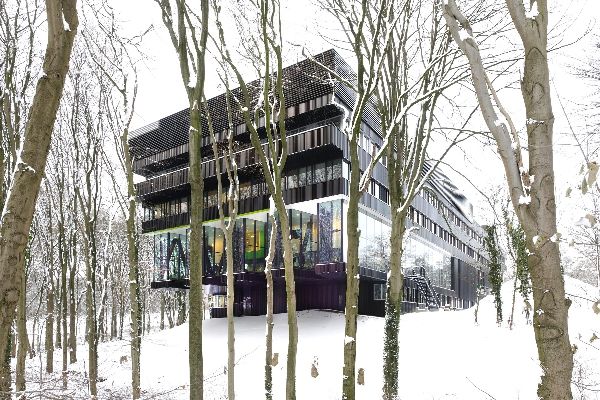
A better environment begins with steel

A better environment begins with steel

A better environment begins with steel

A better environment begins with steel

A better environment begins with steel

Groot Klimmendaal Rehabilitation Clinic (Architect: Koen van Velsen).
The Trias Energetica principle guides the way towards energy-efficient buildings through three steps: limiting the demand for energy, use of as much sustainable energy as possible, and (when necessary) deploying fossil fuels as efficiently and cleanly as possible. But how can we do this in practice? And what points achieve the highest 'score'?
Energy neutral: design principles
Trias Energetica is the basic principle to be followed for building-related energy use. According to this principle, in the first instance as much energy savings as possible must be made, then the remaining energy must be generated as sustainably as possible, and if the building still needs energy it must be used as cleanly and efficiently as possible.

Trias Energetica: three steps to the most sustainable energy supply.
Energy use requirements
A good measure of the energy performance of a building is its Energy Performance Certificate (EPC) value. The EPC requirements for functions other than living were tightened on 1 January 2009. For office buildings, in the new situation the government requires an EPC value 50% lower than in the old situation.
| Function | Current EPC requirement | New EPC requirement |
| Meeting and conference facilities | 2.2 | 2.0 |
| Prisons | 1.9 | 1.8 |
| Health care, non-clinical | 1.5 | 1.0 |
| Health care, clinical | 3.6 | 2.6 |
| Offices | 1.5 | 1.1 |
| Residential accommodation | 1.9 | 1.8 |
| Education | 1.4 | 1.3 |
| Sports accommodation | 1.8 | 1.8 |
| Shops | 3.4 | 2.6 |
For the functions stated in the above figure the government requires a minimum thermal resistance of 2.5 m2K/W. A higher thermal resistance value leads to a lower EPC, although it is generally not possible to indicate how much a higher thermal resistance lowers the EPC value. This should be assessed for each project. For residential accommodation an indication of the reduction of the EPC value is given in the table below. It can be seen that increasing insulation levels can yield benefits of up to ten percent, depending on the required EPC. Improving the thermal resistance of the roof in order to obtain a good total EPC value is more effective than improving the thermal resistance of the outer walls.
| Measure | Terraced house | Detached house |
| Rc roof from 3.0 > 4.0 | -0.02 | -0.03 |
| Rc roof from 3.0 > 5.0 | -0.04 | -0.06 |
| Rc façade from 3.0 > 4.0 | -0.01 | -0.02 |
| Rc facade from 3.0 > 5.0 | -0.02 | -0.04 |
Pointers for reduction of the EPC by increasing thermal resistance.